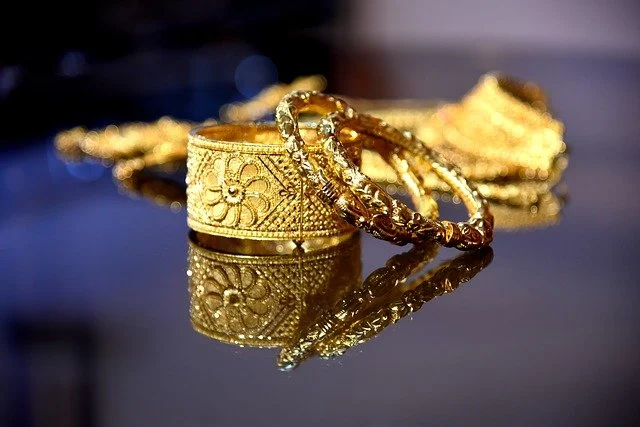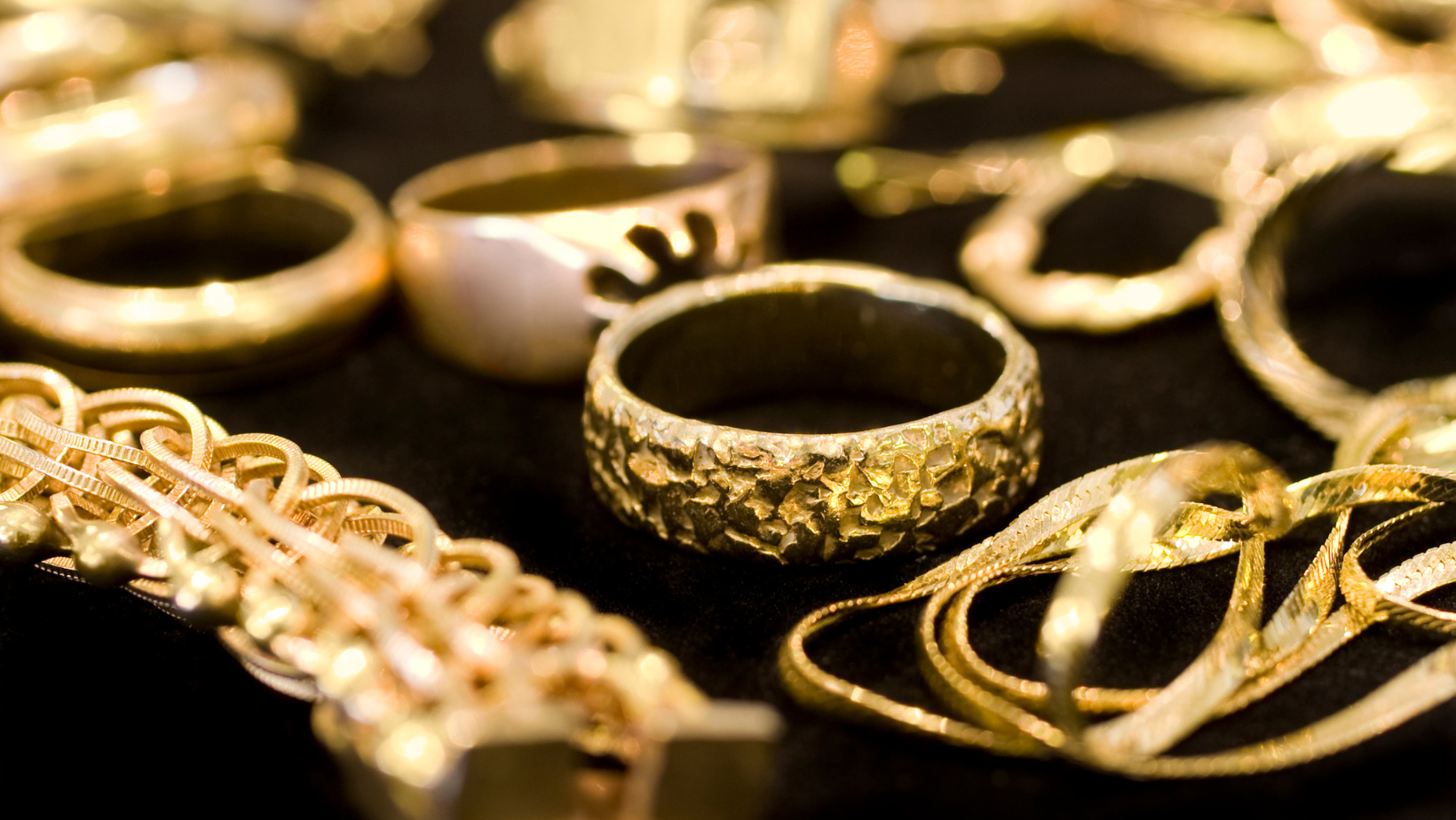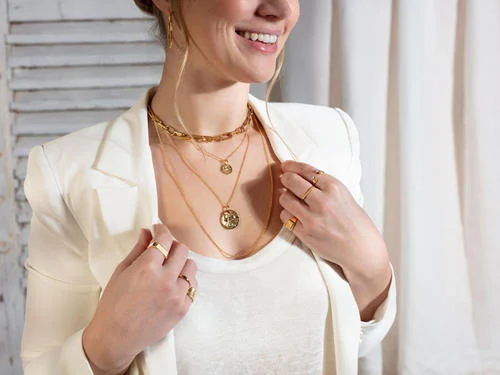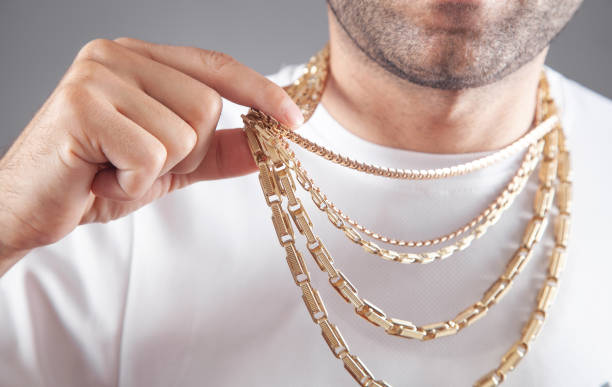
Goldhas long been admired for its beauty, durability, and versatility, making it the preferred choice for timeless jewelry. From ancient treasures to modern wedding bands, its unmatched elegance and cultural significance set it apart from other metals.
In addition to its aesthetic appeal, gold’s resistance to tarnish and adaptability for intricate designs ensure its lasting value. Yellow, white, or rose gold continues to captivate jewelry lovers and symbolize wealth and loveworldwide.
The Historical Significance Of Gold In Jewelry
Gold has a rich history that spans thousands of years, symbolizing power, wealth, and divinity across cultures. Ancient civilizations, such as the Egyptians, revered gold for its heavenly radiance and incorruptibility. Egyptian pharaohs adorned themselves with gold jewelry not just as a display of status but also as a connection to their gods. Gold’s permanence made it the ideal metal for creating artifacts meant to last for eternity.
In Ancient Rome, gold was a symbol of prosperity and was used to craft intricate ringsand brooches. Meanwhile, in India, gold jewelrybecame a cornerstone of cultural and spiritual life, symbolizing purity, prosperity, and auspiciousness. To this day, gold is deeply ingrained in Indian traditions, particularly during weddings and festivals.
Physical Properties That Make Gold Ideal For Jewelry
1. Malleability And Ductility
Gold is exceptionally malleable, meaning it can be easily shaped into intricate designs without cracking or breaking. A single gram of gold can be stretched into a wire over a kilometer long or hammered into a sheet so thin it becomes translucent. This versatility allows artisans to create everything from delicate filigree work to bold, chunky pieces.
2. Hypoallergenic Properties
Pure gold (24k) is hypoallergenic, making it safe for individuals with sensitive skin. While gold alloys (mixed with metals like nickel or copper) can cause allergic reactions in some people, high-karat gold (18k or 22k) is far less likely to irritate the skin compared to base metals like nickel or brass.
3. Customizable Alloys
Gold’s softness in its pure form (24k) means it is often alloyed with other metals to enhance durability. This process also allows for the creation of stunning variations like yellow gold, rose gold, and white gold, adding versatility to its aesthetic appeal.
Gold Vs. Silver
Silveris a popular alternative to gold, primarily because of its affordability. It has a bright, cool appearance that many find appealing. However, silver tarnishes over time due to exposure to air and moisture, requiring frequent polishing to maintain its shine.
While silver is softer than gold, making it prone to scratches and dents, gold’s malleability allows for intricate designs without compromising its durability. Additionally, silver lacks the cultural and symbolic significance of gold, making it less desirable for heirloom or investment pieces. For those seeking lasting beauty and minimal upkeep, gold remains the better choice.
Gold Vs. Platinum
Platinumis a dense, strong, and rare metal often associated with luxury jewelry. Its strength makes it ideal for secure settings, particularly for engagement rings and wedding bands. Platinum is also hypoallergenic, making it suitable for those with sensitive skin. However, it is significantly heavier than gold, which can be less comfortable for everyday wear.
Gold, on the other hand, offers greater versatility. Its malleability allows for intricate designs, and its wide range of alloys, such as yellow, white, and rose gold, provides more aesthetic options than platinum. Gold is also more affordable than platinum, making it accessible to a broader audience while still offering exceptional beauty and durability.
Gold Vs. Stainless Steel
Stainless steel is a modern choice for jewelry, valued for its affordability, strength, and resistance to tarnish. It is commonly used for casual and everyday jewelry, such as bracelets, necklaces, and watches. Stainless steel is also lightweight and hypoallergenic, making it a practical option for many wearers.
However, stainless steel lacks the elegance and prestige of gold. Its utilitarian appearance is better suited for fashion or sporty styles rather than fine jewelry. Additionally, stainless steel holds no significant resale or investment value, unlike gold, which retains its worth over time and across generations.
Gold Vs. Titanium
Titanium is celebrated for its incredible strength and lightweight nature, making it a popular choice for rings, bracelets, and body jewelry. It is also hypoallergenic and resistant to corrosion, making it a durable and practical option. Titanium’s contemporary, matte finish appeals to those seeking modern designs.
While titanium is durable, it cannot match gold’s timeless elegance and versatility. Titanium’s strength makes it difficult to shape into intricate designs, limiting its use in fine jewelry. Moreover, titanium lacks the cultural and symbolic value of gold, making it less suitable for heirloom or luxury pieces.
Gold Vs. Tungsten
Tungsten is another modern metal known for its hardness and scratch resistance. It is often used in men’s rings due to its heavy weight and sleek, industrial look. Tungsten is affordable and virtually indestructible, making it a practical choice for those seeking low-maintenance jewelry.
However, tungsten’s extreme hardness also makes it brittle, meaning it can crack or shatter under impact. Additionally, tungsten lacks the design flexibility of gold and cannot be resized, limiting its long-term usability. Gold’s combination of durability, malleability, and elegance makes it a far superior choice for most jewelry applications.
Gold Vs. Palladium
Palladium is a member of the platinum family and shares many of its characteristics, such as durability, hypoallergenic properties, and a bright white color. It is lighter than platinum, making it more comfortable for everyday wear. Palladium is also less expensive than platinum but still offers a luxurious appearance.
Despite these advantages, palladium is less malleable than gold, limiting the range of designs it can achieve. Gold’s wide range of color options, including yellow and rose gold, offers greater versatility in design and personal expression, giving it a clear edge over palladium.
Gold Vs. Brass
Brass is an alloy of copper and zinc, often used to create jewelry with a warm, golden appearance. It is inexpensive and easy to work with, making it a popular choice for costume jewelry. However, brass tarnishes quickly, turning green over time due to oxidation. It can also cause skin irritation for those with sensitivities to copper or zinc.
Gold, in contrast, does not tarnish and is hypoallergenic in its pure form. Its durability and timeless appeal make it a better option for fine jewelry, especially pieces meant to last a lifetime.
Gold Vs. Copper
Copper is one of the oldest metals used in jewelry-making, admired for its warm reddish hue. It is highly malleable, making it ideal for intricate designs. However, copper oxidizes quickly, developing a green patina over time, which some find undesirable.
Gold offers the same malleability but without the risk of tarnishing. Its luster and resistance to corrosion make it a more practical and visually appealing choice. While copper is suitable for artisanal or casual pieces, gold is the preferred metal for fine and investment-grade jewelry.
Gold Vs. Aluminum
Aluminum is lightweight, corrosion-resistant, and highly affordable, making it a good choice for casual, fashion-focused jewelry. It can be anodized to create vibrant colors, appealing to those who enjoy bold and unconventional styles.
However, aluminum’s softness makes it prone to scratches and dents, and it lacks the elegance and value associated with gold. For jewelry that combines beauty, durability, and long-term value, gold remains unmatched.
The Aesthetic Appeal And Symbolism Of Gold
Gold’s beauty is timeless, exuding a warmth and richness that few metals can rival. Its natural golden hue is universally associated with luxury and elegance, making it a favorite for both traditional and modern jewelry designs.
Symbolism In Jewelry
Gold has long been a symbol of wealth, love, and commitment. This is why gold remains the metal of choice for engagement rings, wedding bands, and heirloom pieces. In many cultures, gold jewelry is also believed to bring good fortune and protection, enhancing its appeal beyond mere aesthetics.
Pairing With Gemstones
Gold serves as the perfect setting for a variety of gemstones. Its neutral, warm tone enhances the brilliance of diamondsand complements colored stones like emeralds, rubies, and sapphires. This versatility makes gold an essential choice for both simple and elaborate designs.
Reasons Why Gold Is Better For Jewelry Than Other Metals
1. Timeless Beauty
Gold’s natural luster and warm, radiant hue make it inherently elegant and appealing. Unlike other metals that may dull or tarnish over time, gold maintains its brilliance, giving jewelry a timeless charm that never goes out of style.
2. Resistance To Tarnish And Corrosion
Gold does not oxidize, tarnish, or corrode, making it a durable option for jewelry. Unlike silver, which requires regular polishing, or metals like brass and copper that develop a patina, gold retains its shine with minimal maintenance.
3. Hypoallergenic Properties
Gold, especially in its purest forms (24k and high-karat alloys), is hypoallergenic. This makes it ideal for people with sensitive skin, unlike nickel, brass, or other base metals that can cause irritation or allergies.
4. Malleability And Versatility
Gold is incredibly malleable, allowing artisans to shape it into intricate designs that are difficult to achieve with harder metals. It can be hammered into thin sheets, drawn into fine wires, or combined with gemstonesto create stunning, detailed jewelry.
5. Variety Of Colors
Gold is available in multiple hues, including yellow, white, and rose gold, achieved by mixing it with different alloys. This versatility in color gives gold an edge over metals like platinum or silver, offering a wider range of design possibilities.
6. Symbolic And Cultural Significance
Gold has been revered across cultures for its association with wealth, prosperity, and love. It holds deep symbolic meaning, often used in wedding bands, engagement rings, and heirloom pieces, making it a metal of emotional and cultural importance.
7. Investment Value
Gold has intrinsic value and is considered a stable investment. Unlike other metals that may depreciate over time, gold retains its value and can even appreciate, making it both a beautiful and practical choice for jewelry.
8. Durability For Long-Term Use
While pure gold (24k) is soft, gold alloys (18k, 14k) are strengthened by combining gold with other metals like copper or silver. This durability makes gold suitable for everyday wear, ensuring that it can last for decades or even centuries. Additionally, gold is considered a body-safe material, especially in its higher karat forms, making it ideal for those with sensitive skin or allergies to other metals.
9. Compatibility With Gemstones
Gold enhances the brilliance of gemstones, whether it’s diamonds, emeralds, or rubies. Its neutral and versatile tones make it an ideal setting for showcasing the beauty of various stones, unlike metals like stainless steel, which may overpower or clash with certain gems.
10. Perfect Balance Of Prestige And Accessibility
Gold offers a balance of luxury and practicality that few other metals can match. While platinum is more expensive and silver is more affordable, gold occupies a sweet spot, offering prestige without being prohibitively expensive for most buyers.
Gold As An Investment And Heirloom Material
Investment Value
Gold’s value as a commodity makes it more than just a decorative metal. It has been a store of wealth for centuries, offering stability in times of economic uncertainty. Unlike other metals, gold retains its intrinsic value and can be easily sold or traded, making it both a financial and sentimental investment.
When it’s time to part with old or unwanted gold jewellery, selling your goldcan be a smart way to unlock its value. Unlike other metals, gold retains its worth exceptionally well, making it a reliable asset to sell when needed. Whether it’s broken pieces, outdated designs, or items you no longer wear, you can sell your gold easily for cash or reinvest it into new jewellery.
Reputable buyers offer competitive prices based on weight and purity, ensuring you get fair market value. Selling your gold is not just a financial decision - it’s a way to give unused jewellery a new purpose.
Heirloom Potential
Gold’s resistance to tarnish and corrosion ensures that pieces crafted today can be passed down for generations. Heirloom gold jewelry often carries stories and memories, making it an irreplaceable treasure for families.
Tips For Choosing Gold Jewelry
1. Understand Gold Purity Levels
Gold’s purity is measured in karats, with 24k being pure gold. While 24k is the most vibrant, it is also softer and less durable. For everyday wear, consider 18k or 14k gold, which balances purity with strength.
2. Select The Right Style
Gold’s versatility allows it to suit any occasion, from simple, everyday pieces to extravagant statement jewelry. Choose designs that align with your personal style and intended use.
3. Care And Maintenance
To keep gold jewelry looking its best, clean it regularlywith mild soap and water, and store it in a soft cloth pouch to avoid scratches.
FAQs
Why Is Gold More Expensive Than Other Metals?
Gold’s rarity, beauty, and cultural significance contribute to its higher price. Additionally, its resistance to tarnish and timeless appeal makes it a worthwhile investment.
What Is The Best Gold Purity For Daily Wear?
18k or 14k gold is ideal for daily wear. These purities offer durability while maintaining a luxurious appearance.
How Does Gold Compare To Platinum For Wedding Rings?
Gold is more affordable and versatile, while platinum is heavier and stronger. Gold offers a wider range of design options and color variations.
Does Gold Scratch Easily?
Pure gold (24k) is soft and prone to scratches, but alloyed gold (18k, 14k) is more durable and better suited for everyday wear.
Can Gold Jewelry Cause Allergies?
Pure gold is hypoallergenic, but alloys mixed with nickel or copper may cause allergic reactions in sensitive individuals. Opt for higher karats to minimize the risk.
Conclusion
Gold’s unique combination of beauty, practicality, and symbolism makes it the ultimate choice for jewelry. Its enduring value and ability to withstand the test of time surpass other metals.
Choosing gold is more than an investment in style, it’s a meaningful decision that carries tradition and legacy. With its timeless allure, gold remains the perfect metal to create pieces cherished for generations.


